We certainly hope that you enjoy perusing this article we have created for you, about Rare North American Flowering Plants. Of course, as well as sadly, these represent only a few of the numerous types of plants now threatened throughout the world.
Species on every continent face many of the same dangers to their existence that the ones listed here do, however. Sadly, that fact holds true for all parts of the world. For the sake of this particular article, though, we are focusing only on those on this continent.
Dwarf Crested Iris
Dwarf Crested Iris Facts
- Leading off this article about Rare North American Flowering Plants is one that’s both beatuiful and somewhat dangerous, the Dawrf Crested Iris.
- The somewhat descriptive term for this marvel serves as the most frequently used of the common names for this beautiful plant species. The delicate marvel also goes another, closely related common name. That’s the simpler term of the crested iris.
- The official scientific name for this creation of Nature and evolution is the comparatively simple term of Iris cristata. Regardless of which term one use to refer to it, however, one fact remains consistent. That’s the fact that, while gorgeous, it’s tiny.
- Though not the first to note it, the Scottish botanist, William Aiton holds the distinction of making the first official recognition of the plant as a separate and distinct species. This scientifically noteable feat the renowned researcher accomplished in 1789.
- Though it had long been known to the Indigenous Peoples of its native region, the American botanist John Bartram became the first European botanist to notice it. In the 1750’s, he sent several specimens to England. It’s been present there since 1776.
- For the moment, the IUCN has no listing for the Dwarf Crested Iris. Any such listing would appear on the organization’s published Red List of Threatened Species. This occurs both due to its numbers in the wild, as well as in global cultivation.
- It nevertheless facing some potential threats. Due to this, it’s listed as Endangered is a few parts of its native range. Habitat loss naturally represents one of the dangers it faces. Its greatest threat, though, most likely comes in the form of climate change.
Dwarf Crested Iris Physical Description
The delicate beauty of the Dwarf Crested Iris certainly merits attention from those who encounter it, of course. That aspect of its biology, however, manifests despite what some might think a disadvantage. That’s due to the fact that this marvel stands quite short.
More precisely, the perennial plant packs all of its outstanding beauty in a package that only attains a maximum height of around 6 in (15 cm). An average height for this floral variety, however, measures about 4 in (10 cm). Some specimens do not exceed 3 in (7.6 cm).
The iris variety also produces numerous long, slender leaves, which present a moderately deep green color. This rather distinctive foliage further develops in a highly variable length. These leaves extend outward in lengths ranging from 4 – 16 in (10 – 40.6 in).
Each plant typically produces a single bloom, though two develop on rare occasions. Remarkably, the petals of these tiny, delicate blooms develop in a wide variety of shades. Its sepals, meanwhile, have a white or yellow, central band, with a purple stripe.
Of further note is the extreme range of the shades the petals of the Dwarf Crested Iris manifest. These, in facct, develop across the spectrum lying between blue to purple to white. This range further varies from individual plant to plant, with no apparent pattern.
- Kingdom: Plantae
- Phylum: Angiosperms
- Class: Monocots
- Order: Asparagales
- Family: Iridaceae
- Genus: Iris
- Species: I. cristata
Dwarf Crested Iris Distribution, Habitat, and Ecology
Unfortunately for those who appreciate its beauty in the wild, the Dwarf Crested Iris possesses a somewhat limited native range of distribution. That’s due to the fact that the diminutive beauty appears naturally in only a small portion of the Northern Hemisphere.
That range of habitation covers portions of a total of nineteen states in the United States, in North America. These states appear in the northeastern, north-central, and southeastern portions of the country. Evidence further indicates it never spread elsewhere.
Somewhat surprisingly, this tiny Angiosperm evolved as endemic to soil containing relatively high ratios of lime. Given this, the plant most often appears naturally in areas such as rocky hillsides, ravines, oak woodlands, mountain ledges, and along gentle streams.
These regions, however, also need to meet yet another condition for the plant to thrive. These conditions must include the specific site to be well drained. If excessive moisture remains in the local soil, the species does poorly, severely limiting its potential expansion.
Pollination of the Dwarf Crested Iris principally occurs due to the activities of several types of bees. Several varities of hummingbirds, though, also favor the flowering plant, finding its nectar especially appealing. In cultivation, it also reproduces via root division.
It further prefers areas of cool, partially shaded conditions, but also does reasonably well in direct sunlight. Its magnificent flowers typically appear in early Spring. Afterward, the plant most frequently goes dormant during the local Winter season.
Local Native American populations, especially the Cherokee, have long used it in traditional medicines. Caution must nevertheless be taken with the little beauty. That’s because, like related species, many parts of this wonder of evolution are moderately poisonous.
Colorado Columbine
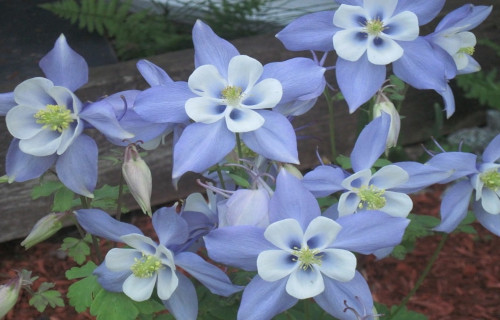
CCL: http://bit.ly/2IjEG4n
Colorado Columbine Facts
- Our next selection for inclusion on this listing of Rare North American Flowering Plants, the Colorado Columbine, is one of many whose name hints at is native range.
- This rather gorgeous plant bears the somewhat deceptive common name of Colorado Columbine. Its endemic range rates as highly restricted but does extend to regions other than just Colorado
- The distinctive and delicate-seeming beauty of the plant has led to its becoming rather popular as an ornamental species. Also adding to that popularity is the fact that a total of five varieties exist
- Although not on the IUCN Red List, many consider it to be in danger and expect it to appear on such lists soon. Further, as with many species with limited habitat, its principle dangers include habitat loss and climate change.
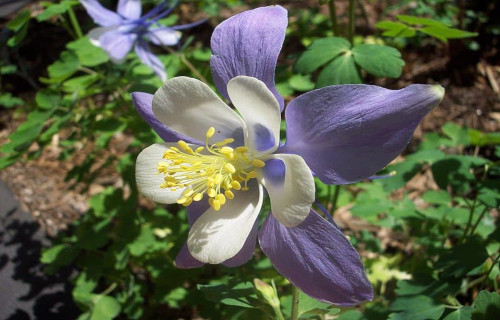
CCL: http://bit.ly/2IjEG4n
Colorado Columbine Physical Description
Firstly, the deceptively named, but remarkable Colorado Columbine classifies as a herbaceous perennial plant. It therefore reappears season after season, despite its seeming fragility.
But, individual plants commonly vary greatly in size, however. This usually occurs as a result of variations in local growing conditions. At maximum, though, the species attains a height of about 24 in (60 cm).
Rather unusually for this type of flower, the color of the blooms varies widely among different individuals. These colors include pale blue, light yellow or pink, and even pure white. Furthermore, each flower often presents as bi-colored.
- Kingdom: Plantae
- Phylum: Angiosperms
- Class: Eudicots
- Order: Ranunculales
- Family: Ranunculaceae
- Genus: Aquilegia
- Species: A. coerulea
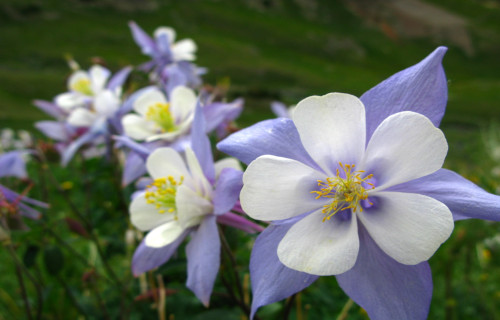
CCL: https://bit.ly/1ryPA8o
Colorado Columbine Distribution, Habitat, and Ecology
Most notably, the truly lovely Colorado Columbine appears to have always had a highly specific range. Current research indicates that the plant evolved as solely endemic to the Rocky Mountains of North America.
Furthermore, even there it does not appear widespread. That’s because, within that range, it only appears in 9 states. However, inside that same range it frequently inhabits several different habitat types.
These most commonly include local alpine regions and the foothills. In addition, the fascinating species sometimes appears at high altitudes. This occasionally reaches heights of as much as 12,100 ft (3,700 m).
Also, it typically thrives in a variety of regions, including meadows, open forests, talus slopes and aspen groves. Unlike many flowers, its pollinators include a wide range of species. These include hawkmoths, bumblebees, and certain flies.
San Diego Thornmint
San Diego Thornmint Facts
- Appearing next among our choices of Rare North American Flowering Plants is the San Diego Thornmint, a seriously protected plant.
- Firstly, the gorgeous San Diego Thornmint represents an extremely rare species of flowering plant. Further, as the common name gives a hint of, it forms a unique member of the mint family.
- In addition, the US Federal Government has now officially listed the plant as an endangered and protected species. However, for the moment, the IUCN lists the plant as Threatened.
- Habitat loss appears to be the primary threat to its continued existence. Unfortunately, much of its former range is now under human habitation. Also, non-native grasses have taken over large swathes of the habitat it once thrived in.
- Finally, the possession of any amount of San Diego Thornmint actually represents a serious crime. In fact, the penalty remains even greater than for the possession of marijuana in the United States.
San Diego Thornmint Physical Description
The small but lovely San Diego Thornmint is a unique annual species. In fact, it typically attains a height of roughly 6 in (15 cm). Additionally, it has oval shaped leaves which average about 0.6 in (1.5 cm) in length.
Also, its beautiful small flowers appear in clusters, known as inflorescences. Furthermore, these numerous blooms present remarkable colors. These usually develop as either a bright pink or a bright purple shade.
Each of the tiny flowers also has a special oval-shaped leaf. This feature measures an average of roughly 0.4 in (1 cm) in length. Lastly, this leaf, typically develops an edging of long, sharp spines.
- Kingdom: Plantae
- Phylum: Angiosperms
- Class: Eudicots
- Order: Lamiales
- Family: Lamiaceae
- Genus: Acanthomintha
- Species: A. ilicifolia
San Diego Thornmint Distribution, Habitat, and Ecology
Quite unfortunately, the marvelous San Diego Thornmint now exists in an extremely limited range. Rather understandably, this includes San Diego County, in the United States, along with Baja, California.
However, it often lives in several different types of habitats. First of all, these most commonly consist of coastal scrubland, chaparral, or grassland. But, it also occasionally appears in wetlands. Yet, it mostly grows in calcareous clay.
Finally, at present, only 59 small populations of this endangered species are known to exist in the wild. Conservation efforts also remain underway, of course. However, its continued existence remains uncertain.
Menzies’ Wallflower
Menzies’ Wallflower Facts
- The fourth of our Rare North American Flowering Plants is the Menzies’ Wallflower, among the rarest of all.
- Most notably, Menzies’ Wallflower serves as the common name for a very rare plant species. This lovely small plant currently appears to be endemic to only four known small individual locations.
- Further, botanists currently recognize a total of four varieties of the remarkable species. Also, all known varieties of the lovely plant presently officially list as Endangered with the IUCN.
- The flowering plant was named after Archibald Menzies, a Scottish botanist. He was the first to recognize it, in the late 18th century. However, it was rare even at the time of its discovery.
- Today, all known clusters exist within a small 8 mi (12.8 km) stretch extending along the coast. This remains the same approximate territory the flower inhabited at the time of its discovery more than two centuries ago.
Menzies’ Wallflower Physical Description
Firstly, depending on the variety, the Menzies’ Wallflower either develops a perennial or biennial. Further, the lovely plant has the physical characteristics of a short herb bearing a resemblance to a mustard plant.
The plant also most commonly attains a height of roughly 6 in (15 cm). The plentiful leaves of the species generally develop comparatively long and straight in shape. These also align themselves along the stem and have a covering of small, fine hairs.
In addition, the flowers appear at the top of the short stalk, and usually in somewhat dense clusters. These also display a bright yellow color, and the petals themselves have a highly rounded shape.
Also, the small fruits produced by the plant grow relatively long and protrude almost straight out from the short stem.
- Kingdom: Plantae
- Phylum: Angiosperms
- Class: Eudicots
- Order: Brassicales
- Family: Brassicaceae
- Genus: Erysimum
- Species: E. menziesii
Menzies’ Wallflower Distribution, Habitat, and Ecology
Quite sadly, the marvelous Menzies’ Wallflower only inhabits a tiny portion of California, in the United States. Further, it only seems to grow in very specialized sand dune habitats along the edge of the coastline.
While the lovely flowering plant produces copious quantities of seeds, propagation rarely succeeds in new specimens. In fact, roughly 98% of all seedlings fail to survive the first year.
This quite rare and unique plant currently has protection under both local and federal law in all known locations. Unfortunately, it faces a number of threats directly tied to its particular habitat.
These include more than the understandable threat poised by climate change. Other dangers it faces include trampling by hikers, off-road vehicles, sand mining. Finally, the presence of invasive species also help place it in peril.
Mount Ranier Lousewort
Mount Ranier Lousewort Facts
- Next among these wonderful Rare North American Flowering Plants comes the amazing species known as the Mount Ranier Lousewort.
- This delicate marvel of Nature bears the informative, if less than verbally appealing, common name for understandable reasons. The formal scientific name for this amazing Angiosperm, however, is the tongue-twisting term of Pedicularis rainierensis.
- The beautiful species received its technical name due to the efforts of the American researchers Francis Whittier Pennell and Fred Adelbert Warren. This team of dedicated researchers made the first formal recognition of it as a separate and distinct species.
- For the moment, the IUCN has no listing for the flowering plant. Any such listing would appear on the organizations’ published Red List of Threatened Species. That lack of listing occurs, in part, due to a lack of sufficient information about the plant.
- The government of the region in which it appears, however, does currently have a listing for its status. That governing body presently lists the Mount Ranier Lousewort as Sensitive. It earns that status due to its relative vulnerability to local factors.
- That’s because, in its native range, it’s especially vulnerable to the actions of man. It’s often trampled by campers and hikers, who favor its native area. It’s also vulnerable to grazing by elks and marmots. Many people also collect specimens, due to its appeal.
- This work of evolution nevertheless faces the same dangers as other species throughout the world. These consist of the dual threats of habitat loss and climate change. The nature of its range further augments its vulnerability to both of these factors.
Mount Ranier Physical Description
The marvelous Mount Ranier Lousewort possesses several attributes that make it stand out in the minds of those who encounter it. Sheer physical size, however, isn’t among them. That’s due to the fact that, for all its loveliness, this Angiosperm remains small.
More precisely, individual specimens attain a maximum known height of only about 16 in (40.6 cm). Conversely, though, mature plants rarely attain heights measuring less than 6 in (15.25 cm). Most individuals, in fact, measure roughly in the middle of that range.
Each delicate plant typically produces several thin, mainly hairless stalks. Each of these in turn develops several stems, along which its pinnate leaves protrude. These average roughly 2 – 6 in (5 – 15 cm) in length. This foliage further averages about 1.2 in (3 cm) in width.
Each dazzling bloom of the Mount Ranier Lousewort, furthermore, produces its own wonders. These include a short, spike-like raceme atop the stem. These are further surrounded by 5 delicate petals. These features also generally manifest a bright yellow shade.
This work of Nature produces its fruit within relatively small, hairless capsules. These typically develop in a flattened and asymmetrical shape. Most commonly, these structures contain several seeds. Those usually manifest a unique, slightly wing-shaped design.
- Kingdom: Plantae
- Phylum: Angiosperms
- Class: Eudicots
- Order: Lamiales
- Family: Orobanchaceae
- Genus: Pedicularis
- Species: P. ranierensis
Mount Ranier Lousewort Distribution, Habitat, and Ecology
Quite sadly, the gorgeous Mount Ranier Lousewort appears to have evolved as endemic to a highly restricted zone of habitation. In fact, it appears in an extremely tiny section of the globe. That’s a portion of the region now known as the continent of North America.
Yet, even there this wonder of Nature only appears within a very narrow range of the continent. It further makes its home in the northwestern portion of the United States. There, it appears solely on and around the magnificent Mount Ranier, as the name hints at.
It therefore understandably principally inhabits an alpine environment. Smaller percentages of its population, however, make their home in nearby sub-alpine areas. Virtually all known specimens coincidentally appear within the boundaries of the Mount Ranier National Park.
Within that range, however, the plant appears to be moderately adaptible in its choice of specific ecosystems. That’s because across this limited range, it appears in several types of area. These include regions of rocky slopes, coniferous forests, and moist meadows.
These further most frequently themselves appear in close proximity to streams or lake basins. It also seems to require a very specific, and small, range of altitudes. Due to this, all known concentrations appear at altitudes between 4,800 – 6,800 ft (1,400 – 2,100 m).
Mount Ranier Lousewort, however, displays an impressive flexibility in terms of its soil requirements. That’s due to the fact that it performs equally well in different types of soil. These include regions of moist talus, spots of deep loam, and even areas of gravelly slopes.
Fairy Lantern
Fairy Lantern Facts
- The sixth entry in this compilation of Rare North American Flowering Plants is one of the most unique, the Fairy Lantern.
- Most notably, the truly gorgeous Fairy Lantern constitutes a stunning species. Unfortunately, however, it also remains an extremely rare type of flowering plant, as well as highly endangered.
- The fascinating species also forms part of the lily family of flowers, a rather extensive grouping of plants. Furthermore, it also sometimes goes by the name White Globe Lily, and the Mt. Diablo Lily.
- In addition, this magnificent species also evolved as endemic to only a very small part of the world. In addition, except for a few stragglers, it actually occurs naturally on only one mountainside.
- Additionally, on occasion, a few of the aforementioned stragglers appear in neighboring counties. However, these scattered individual specimens never seem to establish a permanent presence.
Fairy Lantern Physical Description
Most notably, the rather ethereal looking Fairy Lantern classifies as a perennial herb. The plant also produces a rather long, branching stem. Generally this feature attains a height of roughly 11.8 in (30 cm).
In addition, the lower leaves also typically grow longer than the stem itself. Further, these usually average around 15.75 in (40 cm) in length. These also most commonly remain throughout the life of the flower.
Generally, 2-3 other leaves also appear further up the stem of the plant. These commonly remain much shorter than the lower leaves and wither after the plant blooms. This makes for a rather unusual combination.
The plant also may produce either a single bloom or a cluster of several. All of these may be either white, pink, or a pale yellow in color. These blooms also typically develop spherical in shape. Finally, the ends of the petals always touch each other and generally have a covering of fine hairs.
- Kingdom: Plantae
- Phylum: Angiosperms
- Class: Monocots
- Order: Lilliales
- Family: Liliaceae
- Genus: Calochortus
- Species: C. albus
Fairy Lantern Distribution, Habitat, and Ecology
Perhaps most importantly of all, the magnificent Fairy Lantern unfortunately inhabits an extremely limited range. This tiny territory consists solely of the slopes of Mt. Diablo, in California.
However, within that area, the amazing species actually appears in various habitats. In fact, this stunning little beauty primarily inhabits areas of woods, shady grasslands, coastal bluffs, and rocky areas.
The Fairy Lantern is also utterly unique within its genus in one extremely surprising respect. These delicate blooms never open, but remain in their bud-shaped form throughout the endurance of the bloom.
Virginia Jointvetch
Virginia Jointvetch Facts
- The next of these awesome Rare North American Flowering Plants is the distinctively named Virginia Jointvetch.
- Most notably, the seemingly quite delicate species has a reputation as a somewhat picky plant. This refers to its extraordinarily specific, as well as rather surprising habitat requirements.
- This also remains an extremely rare and beautiful species of flowering plant. Sadly, however, like a great many species in the world today, it now faces concerns over its continued existence.
- Further, habitat loss constitutes a major contributor to the ongoing decline in numbers of the Aeschynomene Virginica. This occurs due to its needs for such a specific combination of conditions.
- Finally, the US government currently lists the plant as Threatened. It has held that unfortunate national status since 1992. Surprisingly, however, the IUCN does not currently list a status for the species.
Virginia Jointvetch Physical Description
Firstly, the lovely and rare Virginia Jointvetch represents a somewhat surprising herbaceous species. In addition, some individual specimens actually attain a height of as much as 6.5 ft (2 m).
The dark green leaves also lie in alternating patterns and are composed of numerous small leaflets. Further, these special leaves remain extremely sensitive to touch. In fact, these will actually close upon contact.
The Virginia Jointvetch also evolved as an annual plant. Additionally, it typically blooms from early to late summer to early fall. The flower of the plant also reaches about 0.4 in (1 cm) in length.
This same lovely bloom most commonly shows a bright yellow color. The center of this feature also boasts small, bright red veins. Finally, the distinctive fruit develops as a relatively small pod.
- Kingdom: Plantae
- Phylum: Angiosperms
- Class: Eudicots
- Order: Fabales
- Family: Fabaceae
- Genus: Aeschynomene
- Species: A. virginica
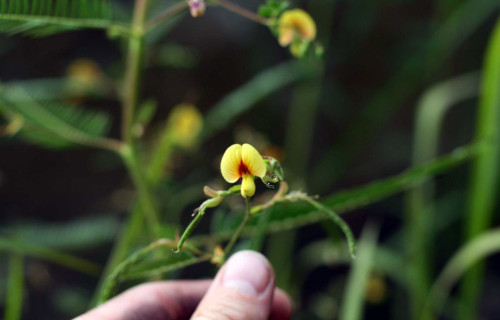
CCL: https://bit.ly/1iowB8m
Virginia Jointvetch Distribution, Habitat, and Ecology
First of all, the truly lovely Virginia Jointvetch thrives in an extremely limited range. That’s because it appears to be native to only to a highly restricted portion of the East Coast of America.
But even there, researchers know of only 20 small, isolated populations of the plant. In addition, most of those also remain quite small in number and widely scattered. This, therefore, makes it highly vulnerable.
Yet more specifically, the few known concentrations of the plant exist in isolated portions of the states of only 4 states. These consist of New Jersey, Maryland, Virginia, and North Carolina.
The Virginia Jointvetch has, surprisingly, evolved to survive only in one ultra-specific habitat. This range is freshwater tidal marshes that both possess low salinity and experience tidal activity.
Finally, due to its highly specific environmental requirements, this plant understandably remains extremely vulnerable. In addition to habitat loos, it also faces the dire threat of climate change.
Abronia macrocarpa
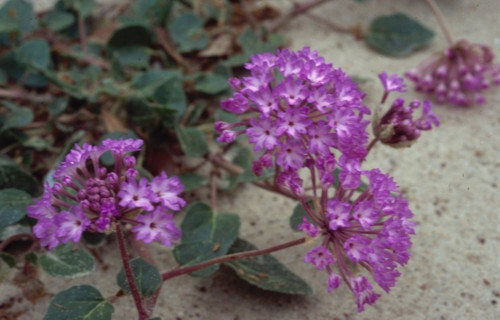
Photo: Greg Wieland/Mercer Arboretum and Botanic Gardens
CCL: https://bit.ly/2TOaaKb
Abronia macrocarpa Facts
- Placing eighth on this listing of Rare North American Flowering Plants is the lovely one with the difficult name, the Abronia macrocarpa.
- First of all, it also remains a very rare and endangered type of flowering plant. Unfortunately, however, this species also has an extremely small natural territory remaining.
- Furthermore, experts did not identify the plant until 1972. The primary reason for this was the simple fact of its scarcity and distribution. Amazingly, it still does not have a common name.
- This surprisingly delicate seeming beauty also has an ability that belies its appearance of fragility. That’s because it seems either adapted to or evolved to survive in, an extremely particular environment.
- Despite being found only in a tiny portion of North America, it holds no status with the IUCN as of yet. However, it does hold the listing of an Endangered Species within the country it inhabits.

Photo: Greg Wieland/Mercer Arboretum and Botanic Gardens
CCL: https://bit.ly/2TOaaKb
Abronia macrocarpa Physical Description
Firstly, the Abronia macrocarpa appears to be a moderate sized perennial species. The stems of this species also grow roughly vertically. Each individual specimen attains an average height of roughly 20 in (50 cm).
Further, the leaves average about 2 in (5 cm) in length and 1.4 in (3.5 cm) in width. These also grow thick and develop a covering of small, sticky hairs. Meanwhile, the flowers develop roughly funnel-shaped, and bright pinkish purple in color.
It also becomes strongly scented to attract multiple native moth species. The strongly scented blooms also develop in large clusters. Finally, the fruit of the Abronia macrcarpa grows uniquely heart-shaped in general structure.
- Kingdom: Plantae
- Phylum: Angiosperms
- Class: Eudicots
- Order: Caryophyllales
- Family: Nyctaginaceae
- Genus: Abronia
- Species: A. macrocarpa

Photo: Greg Wieland/Mercer Arboretum and Botanic Gardens
CCL: https://bit.ly/2TOaaKb
Abronia macrocarpa Distribution, Habitat, and Ecology
Most notably, the tough little beauty that we know as the Abronia macrocarpa remains highly restricted. That’s because it only continues to exist within restricted portions of three counties in Texas. It remains unknown if the plant once had a more extensive range.
In addition, its only known groupings sit in either rather sandy areas or savannah-like woodland areas. That also represents a bit of a mystery. Experts remain unsure if it ever inhabited any other types of habitat.
But sadly, the lovely plant continues to face threats to its survival. Two primary threats to its continued existence exist. These include further loss of habitat due to exploration for oil and development of the land for human use. However, climate change also now poses a further threat.
The plant produces a rather long taproot. It does this to increase its ability to absorb water from the soil of its typically arid habitat. Finally, the plant also becomes dormant after the summer and survives as a taproot.
Hackelia venusta
Hackelia venusta Facts
- This particular addition to our list of Rare North American Flowering Plants, the Hackelis venusta, thrives in an extremely harsh environment.
- To be certain, the lovely herb constitutes an extremely rare species of flowering plant. Not to be outdone by the scientific name, Showy Stickseed serves as its common name.
- This amazing plant also officially lists as an Endangered Species within the country in which it exists. That’s partly due to the fact that only about 770 individual plants presently remain in existence.
- Further, the primary threats to its existence appear to be habitat loss and its already scant numbers. In this, unfortunately, the plant faces the same threats as many other species.
- Finally, a single disaster such as severe weather or wildfire could potentially eradicate the entire species. But, despite all these facts, the plant does not yet have a listing on the IUCN Red List.
Hackelia venusta Physical Description
Firstly, the rather amazing Hackelia venusta evolved as a perennial herb. In addition, each taproot produces several leafy stems. Somewhat surprisingly, each of these may be as much as 16 in (40 cm) in height.
It also blooms between April and May when it produces large clusters of small flowers roughly 0.8 in (2 cm) across. These tiny but beautiful blooms typically present as either bluish or white in color.
Further, the fruit presents as a rather small nut covered in short, stiff, hair-like structures. Interestingly, these features cling tightly to any passing animal, allowing for successful dispersal of the seeds.
- Kingdom: Plantae
- Phylum: Angiosperms
- Class: Eudicots
- Order: Boraginales
- Family: Boraginaceae
- Genus: Hackelia
- Species: H. venusta
Hackelia venusta Distribution, Habitat, and Ecology
To the likely surprise of many, the beautiful Hackelia venusta grows in areas of rock ledges and open talus. Its native soil remains quite rocky and sandy, with relatively poor nutrient levels.
The species also requires copious amounts of direct sunlight to thrive and does not tolerate shade. This further makes its habitat requirements highly specific, only adding to its vulnerability.
Also, only one known population of the Hackelia venusta currently exists. It only exists within Tumwater Canyon in Chelan County, Washington State, in an extremely isolated region.
This remote location also forms part of the protected Wenatchee National Forest. Additionally, the entire habitat range of this rare species comprises only an estimated 2.5 acres (1 hectare). Furthermore, it lies a mere 330 ft (100 m) from a major highway passing through the National Forest.
Scrub Morning Glory
Scrub Morning Glory Facts
- Among these Rare North American Flowering Plants, the Scrub Morning Glory actually holds two different kinds of classifications.
- Most definitely, the lovely species constitutes a rare type of flowering plant. Further, as the common name implies, it is also a member of the large morning glory family.
- The lovely, not to mention delicate, species also remains endemic to a highly restricted habitat range. In fact, it represents the only member of its genus found within the borders of the country it inhabits.
- Furthermore, fewer than 100 known populations of it still exist. Therefore, the local government listed it as Threatened in 1987. Surprisingly, however, the IUCN does not yet have a listing for it.
- The primary threat to its continuation as a species appears to be habitat loss. This holds true because humans converted much of its natural habitat to citrus groves and urbanized areas. Invasive species also threaten it.
Scrub Morning Glory Physical Description
Firstly, botanists classify the Scrub Morning Glory as both a wildflower and a perennial vine. This fact remains uncommon. The vine grows along the ground, usually attaining a length of roughly 10 ft (3 m).
Also, each individual plant produces a deep taproot, along with multiple stems underground. Numerous leaves line the stem itself, while it has a covering of a multitude of small hair-like structures.
Additionally, the leaves possess a grayish-green color with a leathery texture and average around 2 in (5 cm) in length. The large flowers also develop at the end of a short stem along the vine and may be as much as 4 in (10 cm) across.
In color, the flowers typically display a bluish-purple, with a blue and white interior. Meanwhile, the fruit develops as a tiny capsule measuring nearly 0.4 in (1 cm)long and normally, contains only four seeds.
- Kingdom: Plantae
- Phylum: Angiosperms
- Class: Eudicots
- Order: Solanales
- Family: Convolvulaceae
- Genus: Bonamia
- Species: B. grandiflora
Scrub Morning Glory Distribution, Habitat, and Ecology
First of all, the delicate beauty that is the Scrub Morning Glory is endemic only to only a tiny portion of its native region. That’s because it only appears naturally in central Florida.
Fortunately, however, many of the few remaining populations are located within the confines of the Ocala National Forest. As a result, these have at least some protection from human activities.
Further, as the name indicates, its natural habitat includes scrub, and sandy regions. These typically appear in association with thinly forested regions. It is actually helped by the occurrence of wildfires in the region, which clears away the competing undergrowth. It has also proven capable of adapting to cleared sections of sandy land.
Finally, outside of the federally protected area it inhabits, many of the remaining populations are also threatened by road maintenance activities. These include mowing and, of course, the spraying of herbicides.
Ghost Orchid
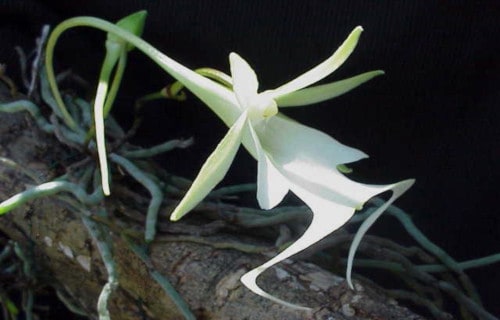
CCL: https://bit.ly/34g6d1m
Ghost Orchid Facts
- Our next choice for inclusion in this compendium of Rare North American Flowering Plants is the gorgeous Ghost Orchid.
- The gorgeous plant most often known by the unusual common name represents a truly magnificent species of flora. The fabulous botanical beauty also goes by a few other common names in parts of its native range, however.
- A few of these alternate terms include the white frog orchid and the palm polly. This awesome flowering plant nevertheless also bears another, less memorable appellation. That’s the cumbersome scientific name of Dendrophylax lindenii.
- The Belgian plant collector Jean Jules Linden became the first person to officially recognize the species. The fortuitous discovery of this lovely plant occurred in the year 1844. In doing so, he gave the world a great gift of beauty.
- To the amazement of some, this plant holds a surprise. It bears a close relationship to species native to lands bordering the African and Indian Oceans. This occurs because the members of its genus all evolved during the time of Gondwana.
- Quite sadly, the truly stunning plant called the Ghost Orchid now finds itself in grave peril. This lamentable situation actually occurs due to not merely one problem, but a combination of multiple factors. These include its small range and habitat loss.
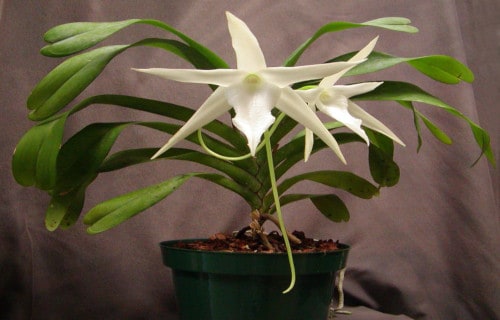
CCL: https://bit.ly/3iZ7sca
Ghost Orchid Physical Description
The truly fantastic Ghost Orchid represents one of the orchid varieties that grows as what’s technically known as an epiphyte. That’s because it grows on the surface of another organism and receives its nourishment directly from the air and water.
Within its native habitat, however, this surface most commonly includes the limbs and trunks of trees. The remarkably adapted Angiosperm further displays a relatively strong preference for pop ash and pond-apple trees, though. The reason for this remains unknow.
The visually and physically distinctive variety of orchid typically also develops as a leafless vine. It also remains best known for the gorgeous blooms it produces. The marvelous Ghost Orchid further generally produces between 1 – 10 of these.
Not content to stop there, its blossoms also tend to open only one at at time, prolonging our enjoyment of its appeal. The flowers display a brilliant white color, and average 2.75 – 3.5 in (7 – 9 cm) in length. The same blooms also average 1.2 – 1.6 in (3 – 4 cm) in width.
- Kingdom: Plantae
- Phylum: Tracheophyte
- Class: Monocots
- Order: Asparagales
- Family: Orchidaceae
- Genus: Dendrophylax
- Species: D. lindenii
Ghost Orchid Distribution, Habitat, and Ecology
Quite unfortunately, the magnificent Ghost Orchid evolved to a natural range that poses it numerous problems. That’s because it appears in a portion of the globe that’s both extremely limited and restricted. These zones of habitation are also highly isolated.
In point of fact, the beautiful and delicate Angiosperm occurs in the wild in only two small portions of the world. To the amazement of some, these isolated locations include the island of Cuba, and the state of Florida, in the United States, in North America.
Its own nature tends to make it difficult for the beautiful plant to prosper, however. Regrettably, those same traits also make it even more complicated for it to spread in any numbers. That’s because the species of flora only appears naturally in very specific areas.
These extremely selective areas comprise regions consisting primarily of damp, swampy forests. But wait, there’s more yet to come. The fabulous, but highly selective plant also requires the presence of specific tree species in sufficient abundance.
The breathtaking Ghost Orchid also holds yet another distinction. That holds true due to the fact that its physical nature remains extremely uncommon among Monocots. Its leaves and stem have been reduced to almost non-existence.
As a result, the great majority of its mass now holds a most bizarre-seeming appearance. In point of fact, most of its form now consists of its many branching, root-like roots. Finally, it’s also pollinated almost exclusively by a variety of moths, further distinguishing it.
Rare North American Flowering Plants
We hope that you have enjoyed this article about Rare North American Flowering Plants. Obviously, and also sadly, this article only touches on a small percentage of those plants on the continent, flowering or otherwise, that find themselves in danger of extinction.
Much more must be done to protect and preserve the endangered forms of life on this planet. This holds true across all portions of our beautiful world. Let us all do our part to preserve these wondrous works of Nature and evolution for our posterity.
Check out our other articles on Native North American Mammals, Spectacular Dolphins Throughout Our World, Incredible Sharks of the World, Earth’s Extremely Threatened Flowers
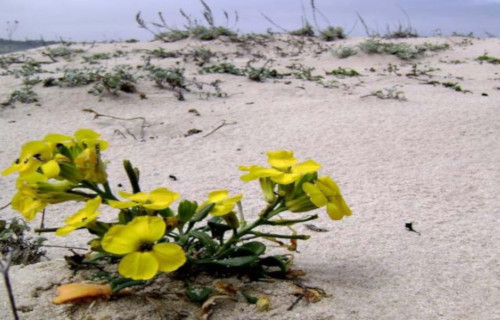
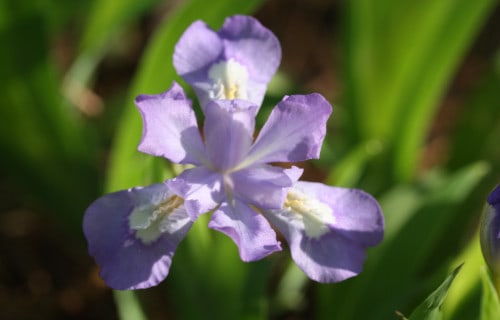
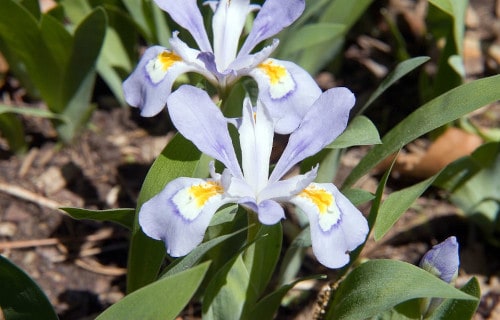
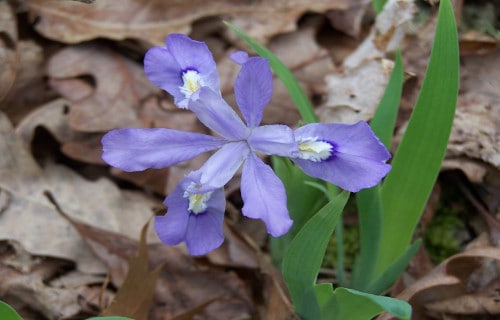
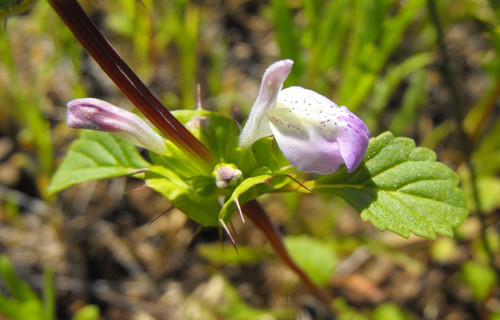
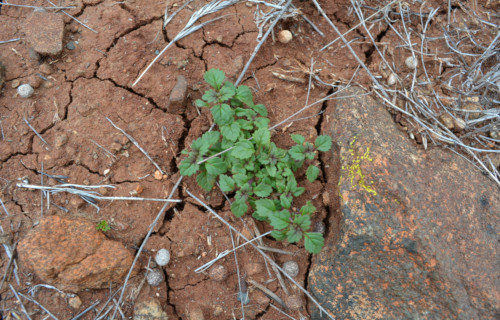
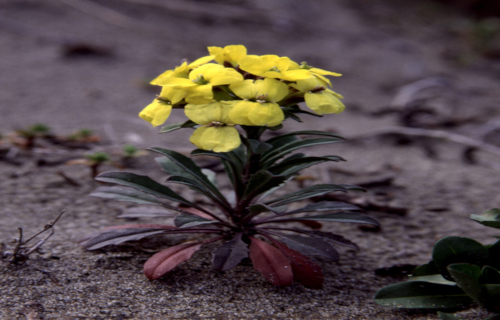
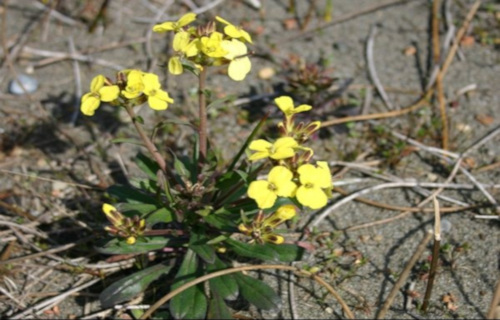
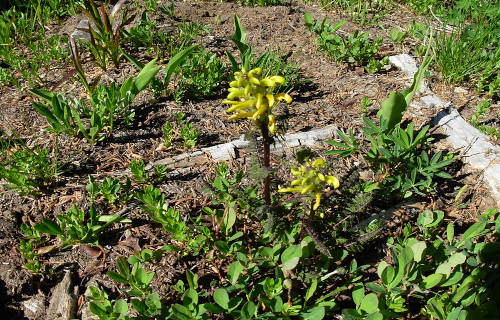
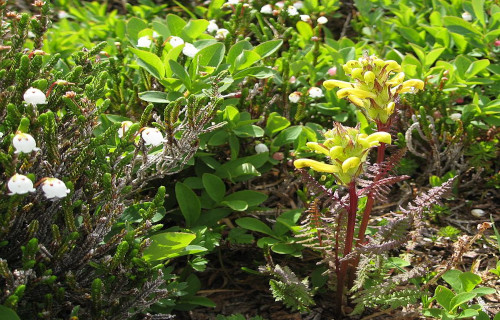
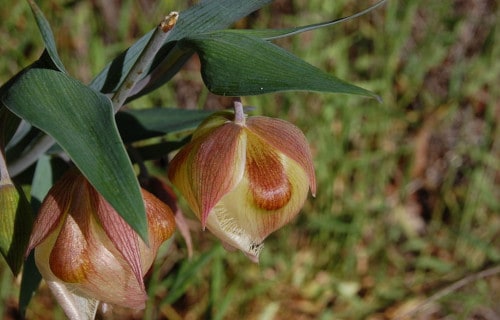
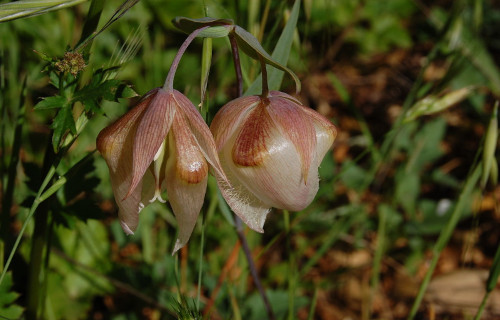

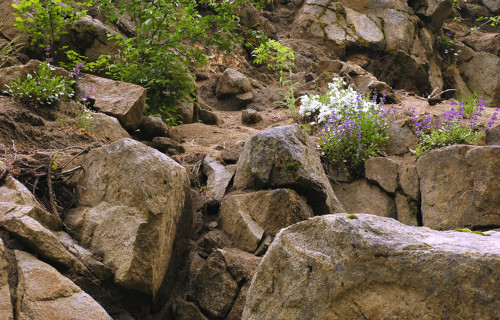
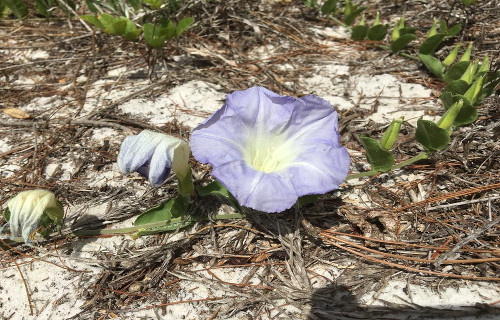
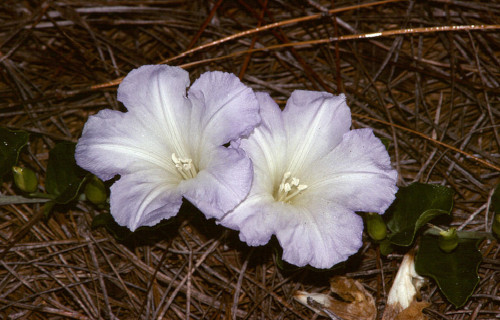
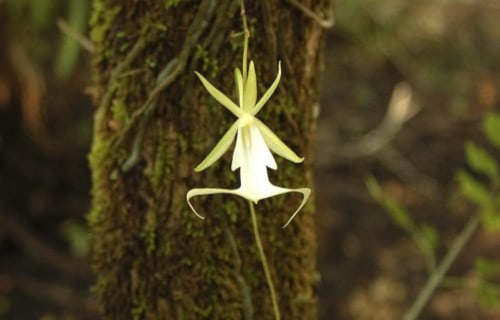









Leave a Reply